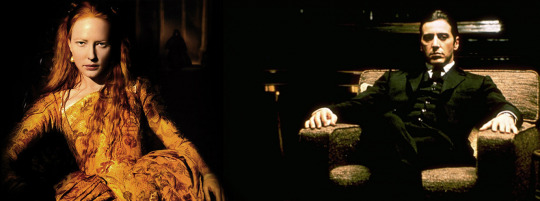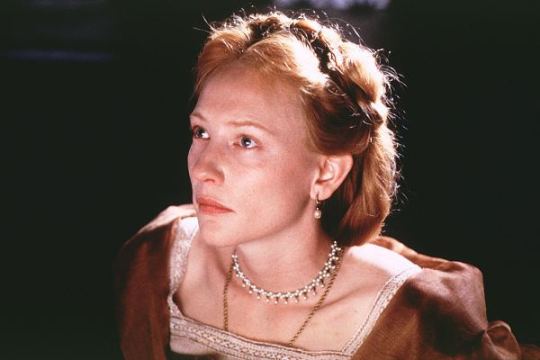Killer Queen: Shekhar KapursElizabeth by Chris Evangelista
By Yasmina Tawil

A time of turmoil, upheaval, and bloodshed. The youngest living child of a once powerful, feared man becomes the unlikely head of the family business. Following betrayal, and the violent elimination of rivals, this individual obtains absolute power while losing an aspect of humanity. In simplistic terms, this is the storyline of The Godfather. But its also the storyline of Shekhar Kapurs 1998 film Elizabeth. With adept staging, a captivating lead performance, and an utter disregard for the facts, Kapurs Elizabeth took what could easily have been a dry, stuffy historical drama into gangland territory, turning the Virgin Queen into a tragically flawed character in the style of Godfather chosen son Michael Corleone.
The monarch, who ruled for 44 years and was the last of the Tudor dynasty, had been featured in several films and TV miniseries before Kapurs 1998 drama. But you wont find a similar history lesson in Kapurs Elizabeth. Kapur and screenwriter Michael Hirst filter the best elements of the historical story through the lens of a Godfather-esque drama. I had to make a choice, Kapur explained to The Independent, whether I wanted the details of history or the emotions and essence of history to prevail. In the resulting film, the emotions prevail. Characters motives are not rooted in their historical counterparts at all, and Elizabeth condenses about 14 years of the Queens early reign into what feels like only a few months on the job. Yet this allows Kapur to focus on what it takes for Elizabeth to gain power, without being bogged down by historical accuracy. The conflict here is simple: in order to reign supreme, Elizabeth must learn to smite her enemies and make herself more than just a human being; she has to become an icon.
Like youngest Corleone heir Michael in Francis Ford Coppolas The Godfather, Elizabeth is an outsider looking in and yet her connection to Henry VIII helps define her identity on the throne. The Catholic Church and Queen Mary (Kathy Burke) are brutally resisting the Protestants – and Elizabeth, born of King Henry VIIIs second wife, Anne Boleyn, is a Protestant. Although Henry VIII, for his part, never makes a physical appearance in Elizabeth, the corpulent king looms over Elizabeth just as Marlon Brandos Don Vito Corleone did in The Godfather. I am my father’s daughter, Elizabeth intones later in the film. I am not afraid of anything.

Kapur lucked out in the casting of the then relatively unknown Cate Blanchett, who brings the perfect blend of humanity to a figure who had long been flattened into an emotionless, mythical figure of history. Blanchett starts the film as a romantic, hopeful, idealistic girl who holds fast to her principles. When she stands accused of treason and faces possible execution, her sister, Queen Mary, gives her an easy out: proclaim that if somehow crowned queen, she will retain Catholic beliefs rather than Protestant ones. The headstrong Elizabeth will not yield, declaring shell instead act as [her] conscience dictates. As Elizabeth progresses, Blanchett hardens her performance into something like all that cold white stone that surrounds the characters. She rages, she suffers, she loses any trace of mirth or innocence, while retaining her steadfast adherence to her principles. As the film draws to a violent conclusion, the almost childlike girl that she was has been replaced by a resolute, powerful woman. I have rid England of her enemies, she says, her voice flat and cold. What do I do now? Am I to be made of stone? Must I be touched by nothing? By the end of the film, shes slathered in ghoulish white make-up, her red hair sheared from her head and replaced with a towering wig.
Elizabeths final, absolute control is aided in part by her advisor and hitman Sir Francis Walsingham, played devilishly by Geoffery Rush as a cool, irreligious enforce, unlike the fiercely Protestant historical figure. The film also has him murder one of Elizabeths rivals, Mary of Guise, the French Queen of Scots – an event that absolutely did not happen. When grilled by advisors about the murder, Elizabeth promptly replies, I never sanctioned it! but she shoots Walsingham a knowing look. Around every shadowy corner in the vast, stone structures that the characters drift through, there seems to be another enemy hoping for – or literally plotting – Elizabeths death and refusing to recognize a Protestant queen. Walsingham protects and enables her.



